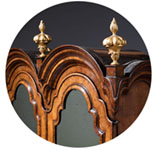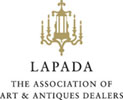19th Century Portrait of a Prize Winning Cow in a Landscape Scene, Forest Bel
Sold
Follow Us
19th Century Portrait of a Prize Winning Cow in a Landscape Scene, Forest Bel
A charming 19th Century portrait of a prize cow – “Forest Bell”.
A 19th century portrait of a prize winning cow in a landscape setting – “Forest Bell” attributed to A M Gauci. A plaque at the bottom of the frame reads “Forest Bell Bred and fed by James Jackson, Lilleshall, Newport Salop. First prize Birmingham 1867, £15 and silver medal, oil on canvas – housed in its original Birds Eye maple wood frame.
Condition
Good. Wear consistent with age and use. Condition Report: the painting is beneath glass and appears to be in good condition, the attribution plaque is also beneath the glass and appears to be attached to the painting.
Dimensions
Height: 26.58 in (67.5 cm)
Width: 32.68 in (83 cm)
Depth: 1.58 in (4 cm)
Provenance
Has cuttings and a letter of valuation from Sotheby’s dated 1987.
PREVIOUSLY SOLD
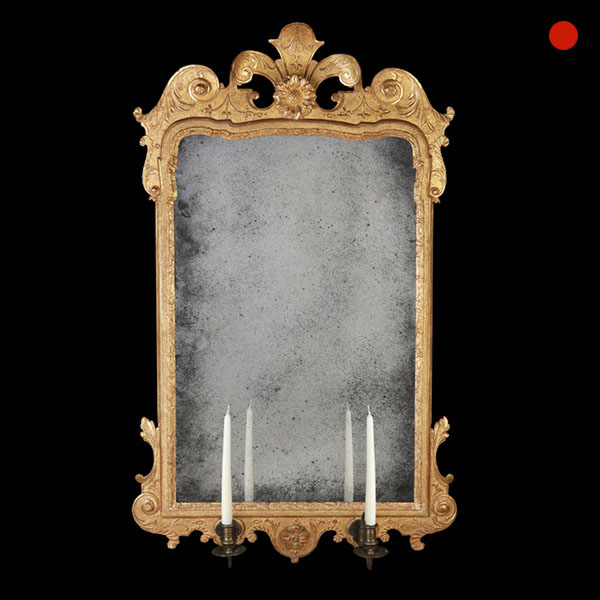
George I Gilt Gesso Mirror
IMPORTANT DESIGN – A fine early 18th-century gilt gesso mirror of generous proportions retaining its original shaped and bevelled mirror plate. The frame expresses great freedom through its carving with scrolling leaves adorning the frame centred by an elaborate three-dimensional cartouche.
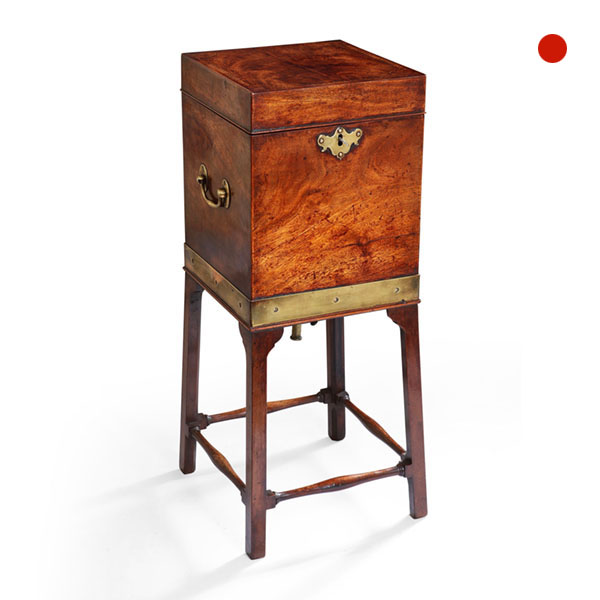
George III Mahogany Wine Cooler, Cellarette
Superb George III mahogany wine cooler or cellarette on stand. The cellarette is in fabulous original condition with a lovely rich patina. Lovely well-patinated flame of mahogany to the top, with a line rope inlayed stringing of holly and box. Original led lined interior divided into four sections.
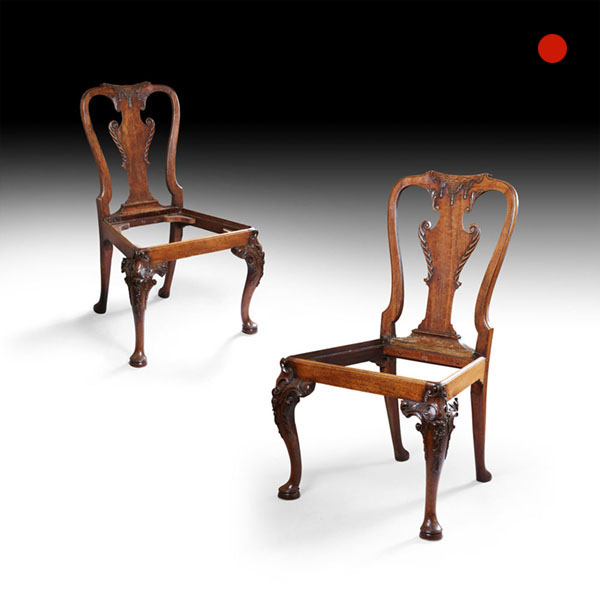
George I Carved Irish Walnut Pair of Chairs
A rare and fine pair of Irish George I walnut side chairs of excellent colour and patina, circa 1720. The undercut shaped back-splats of violin form are beautifully and naturally carved in acanthus leaves, returning into eared scrolls, topped by a crest rail depicting curtain swags and fine hanging passementerie.
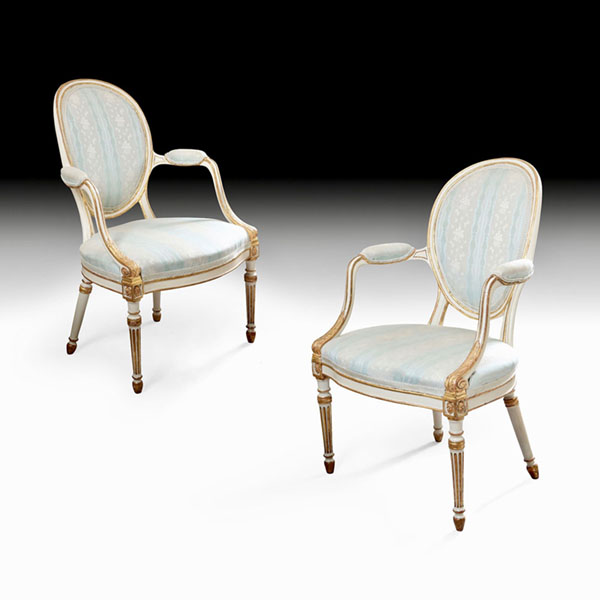
George III Parcel Gilt Painted Pair of Chairs
A fine pair of painted and carved George III English chairs in the French taste, upholstered in silk damask.
Possibly by John Linnell.
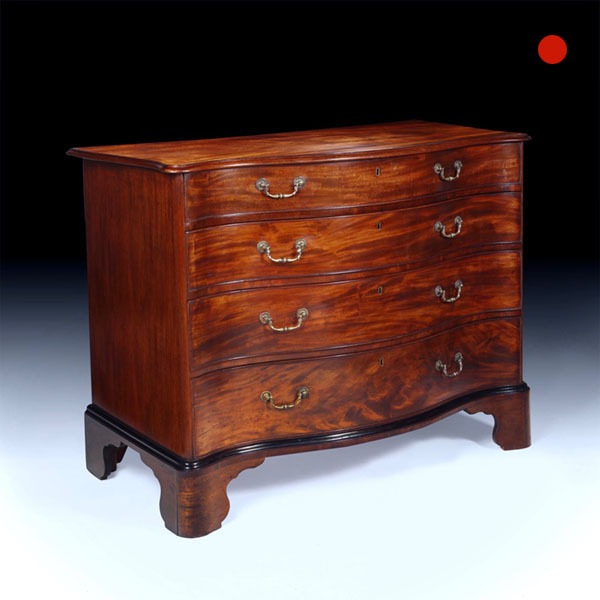
George III Mahogany Serpentine Chest of Drawers
Dating from one of the most famous and highly celebrated periods in English furniture history, now known as the ‘Chippendale period’.
This fine George III mahogany serpentine chest is very much in the manner of Thomas Chippendale.
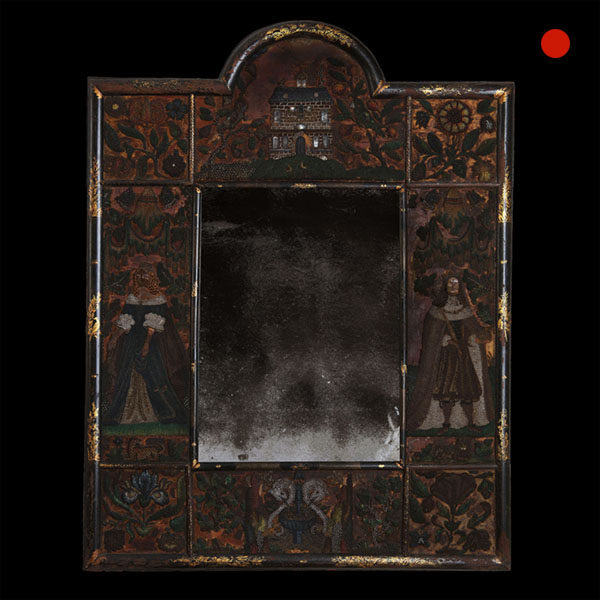
17th-Century Beadwork/Stumpwork Japanned Mirror
Advances in English domestic glass production in the second half of the century coincided with the fashion for stumpwork and resulted in the production of some of the most spectacular examples being produced.

George I Gilt Gesso Mirror
IMPORTANT DESIGN – A fine early 18th-century gilt gesso mirror of generous proportions retaining its original shaped and bevelled mirror plate. The frame expresses great freedom through its carving with scrolling leaves adorning the frame centred by an elaborate three-dimensional cartouche.

George III Mahogany Wine Cooler, Cellarette
Superb George III mahogany wine cooler or cellarette on stand. The cellarette is in fabulous original condition with a lovely rich patina. Lovely well-patinated flame of mahogany to the top, with a line rope inlayed stringing of holly and box. Original led lined interior divided into four sections.

George I Carved Irish Walnut Pair of Chairs
A rare and fine pair of Irish George I walnut side chairs of excellent colour and patina, circa 1720. The undercut shaped back-splats of violin form are beautifully and naturally carved in acanthus leaves, returning into eared scrolls, topped by a crest rail depicting curtain swags and fine hanging passementerie.

George III Parcel Gilt Painted Pair of Chairs
A fine pair of painted and carved George III English chairs in the French taste, upholstered in silk damask.
Possibly by John Linnell.

George III Mahogany Serpentine Chest of Drawers
Dating from one of the most famous and highly celebrated periods in English furniture history, now known as the ‘Chippendale period’.
This fine George III mahogany serpentine chest is very much in the manner of Thomas Chippendale.

17th-Century Beadwork/Stumpwork Japanned Mirror
Advances in English domestic glass production in the second half of the century coincided with the fashion for stumpwork and resulted in the production of some of the most spectacular examples being produced.
YOU MAY ALSO LIKE
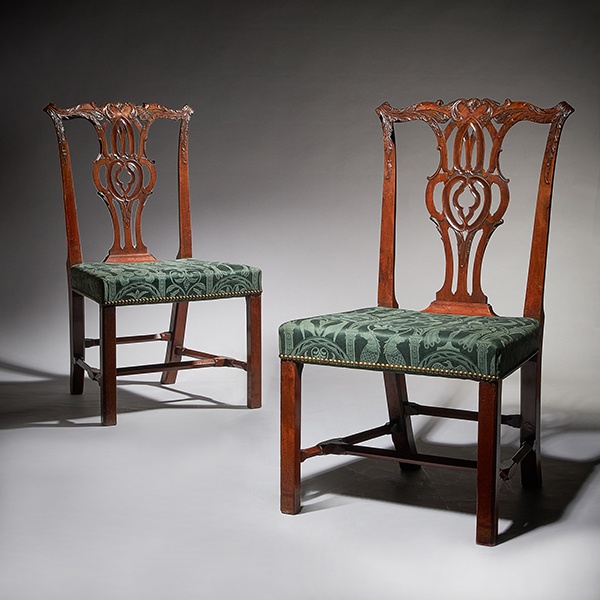
Pair of 18th Century George III Carved Mahogany Chippendale Chairs
Pair of 18th Century George III Carved Mahogany Chippendale Chairs £8,900Follow UsPair of 18th Century George III Carved Mahogany Chippendale Chairs A simply superb pair of carved George III mahogany chairs, C.1770. Condition Good. Wear...
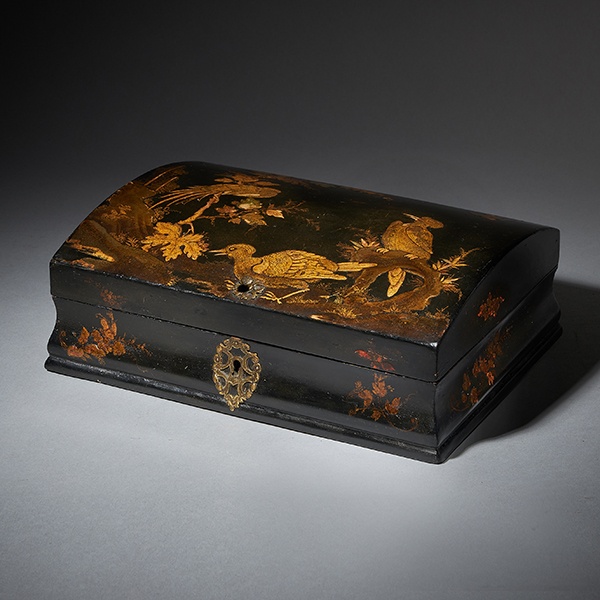
18th Century Japanned Chinoiserie Dome-Topped Box, Circa 1715-1725
18th Century Japanned Chinoiserie Dome-Topped Box, Circa 1715-1725 £3,800Follow Us18th Century Japanned Chinoiserie Dome-Topped Box, Circa 1715-1725 Early 18th century George I Japanned Chinoiserie dome-topped box, Circa 1715-1725. England or...
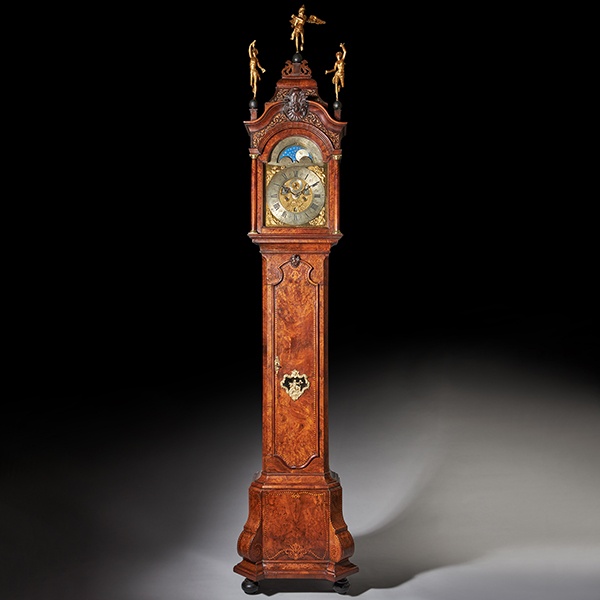
Magnificent 18th Century Striking Dutch Amsterdam Burl Walnut Longcase Clock
Magnificent 18th Century Striking Dutch Amsterdam Burl Walnut Longcase Clock £26,000Follow UsMagnificent 18th Century Striking Dutch Amsterdam Burl Walnut Longcase Clock An impressive Dutch longcase clock with a burr walnut veneered oak case,...
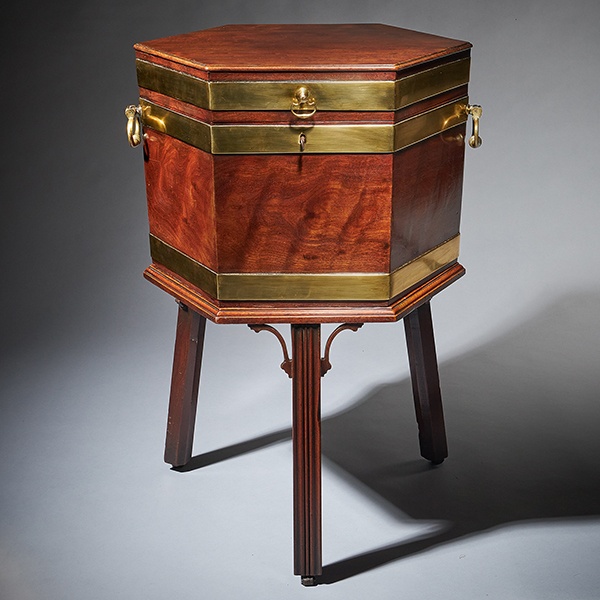
18th Century George III Mahogany Wine Cooler or Cellarette
18th Century George III Mahogany Wine Cooler or Cellarette £4,600Follow Us18th Century George III Mahogany Wine Cooler or Cellarette A fine and well-figured George III mahogany hexagonal wine cooler or cellarette on the original stand, C....

Striking 19th Century Carriage Clock with a Gilt-Brass Corniche Case by Grohé
Striking 19th Century Carriage Clock with a Gilt-Brass Corniche Case by Grohé £3,995 Follow UsStriking 19th Century Carriage Clock with a Gilt-Brass Corniche Case by Grohé Striking carriage clock with a gilt-brass corniche case by Grohé,...
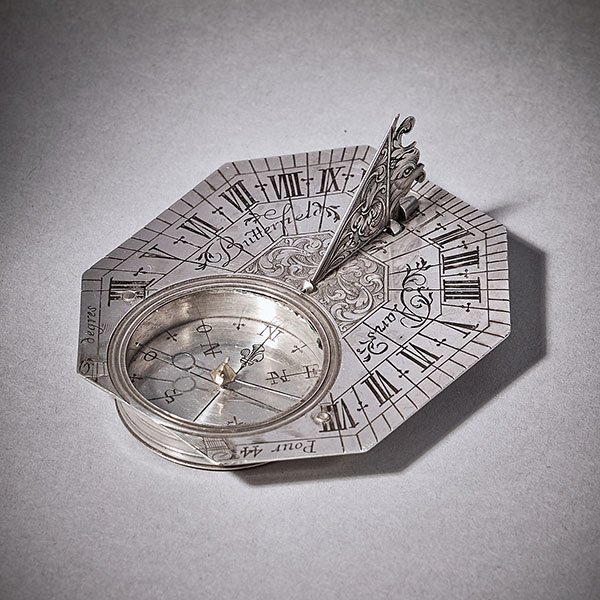
Rare Silver Pocket Sundial and Compass by Michael Butterfield, Paris, circa 1700
Rare Silver Pocket Sundial and Compass by Michael Butterfield, Paris, circa 1700 £4,900 Follow UsRare Silver Pocket Sundial and Compass by Michael Butterfield, Paris, circa 1700 A beautiful, rare solid silver Anglo-French octagonal pocket...

Pair of 18th Century George III Carved Mahogany Chippendale Chairs
Pair of 18th Century George III Carved Mahogany Chippendale Chairs £8,900Follow UsPair of 18th Century George III Carved Mahogany Chippendale Chairs A simply superb pair of carved George III mahogany chairs, C.1770. Condition Good. Wear...

18th Century Japanned Chinoiserie Dome-Topped Box, Circa 1715-1725
18th Century Japanned Chinoiserie Dome-Topped Box, Circa 1715-1725 £3,800Follow Us18th Century Japanned Chinoiserie Dome-Topped Box, Circa 1715-1725 Early 18th century George I Japanned Chinoiserie dome-topped box, Circa 1715-1725. England or...

Magnificent 18th Century Striking Dutch Amsterdam Burl Walnut Longcase Clock
Magnificent 18th Century Striking Dutch Amsterdam Burl Walnut Longcase Clock £26,000Follow UsMagnificent 18th Century Striking Dutch Amsterdam Burl Walnut Longcase Clock An impressive Dutch longcase clock with a burr walnut veneered oak case,...

18th Century George III Mahogany Wine Cooler or Cellarette
18th Century George III Mahogany Wine Cooler or Cellarette £4,600Follow Us18th Century George III Mahogany Wine Cooler or Cellarette A fine and well-figured George III mahogany hexagonal wine cooler or cellarette on the original stand, C....

Striking 19th Century Carriage Clock with a Gilt-Brass Corniche Case by Grohé
Striking 19th Century Carriage Clock with a Gilt-Brass Corniche Case by Grohé £3,995 Follow UsStriking 19th Century Carriage Clock with a Gilt-Brass Corniche Case by Grohé Striking carriage clock with a gilt-brass corniche case by Grohé,...

Rare Silver Pocket Sundial and Compass by Michael Butterfield, Paris, circa 1700
Rare Silver Pocket Sundial and Compass by Michael Butterfield, Paris, circa 1700 £4,900 Follow UsRare Silver Pocket Sundial and Compass by Michael Butterfield, Paris, circa 1700 A beautiful, rare solid silver Anglo-French octagonal pocket...
